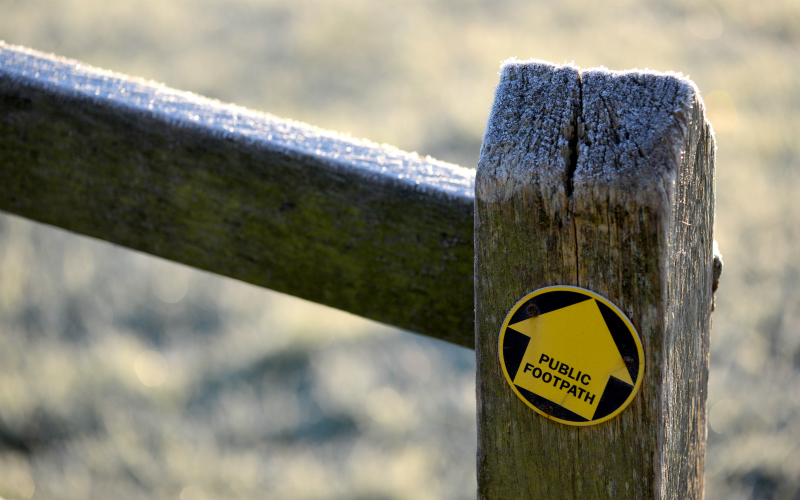
The 'right to roam' has been in the news again recently, with the decision by the Inner House of the Court of Session in a case where an Estate owner who owned land within the boundary of a National Park was found to have breached the ‘right to roam’ legislation by locking 3 gates and placing a sign warning of the danger of wild boar in the area. The case has once again highlighted the importance of Landowners being aware of and complying with their obligations to allow access – but what rights do members of the public actually have and how can this be managed by responsible Landowners?
What is the right to roam?
Traditionally, members of the public have enjoyed free access to hill ground. Subject to respecting the interests of others, this led to a general presumption that they were allowed to be there. This became known as the 'right to roam' although it was not formally recognised in law until the introduction of the Land Reform (Scotland) Act 2003 ("the 2003 Act").
The 2003 Act confirms when and where the 'right to roam' can be exercised. Generally speaking, everyone has the right to access most land and inland water in Scotland, including mountains, woods and forests, margins of fields where crops are growing, lochs and rivers, most parks and open spaces. The rights can be exercised at any time of the day or night and can be used for most recreational purposes, such as hiking, horse riding, cycling and wild camping. There are exceptions to where the rights can be accessed, such as houses, gardens, lands where crops are growing and sports or playing fields.
The Scottish Outdoor Access Code, which was produced by Scottish Natural Heritage to outline these rights, how they should be exercised and the obligations of Landowners, came into effect on 5 February 2005.
What are the rights and duties of the public?
Under the Scottish Outdoor Access Code, members of the public exercising their right to roam must do so responsibly. They must not interfere unreasonably with the rights of others and should act lawfully and take account of the interests of others and the features of the land. Particularly, the Code provides that members of the public should:
- Take responsibility for their own actions by ensuring their own safety;
- Respect people's privacy by not acting in a way which could annoy or alarm people, and by using and not straying beyond paths where available;
- Keep clear of any land management operations, such as harvesting, avoid damaging crops and leave gates as they find them;
- Care for the environment by removing any litter and not interfering with any wildlife; and
- Keep dogs under control and clean up their mess.
How can Landowners manage their land and the right to roam?
The Code provides that Landowners must manage their land in a responsible manner which is compatible with the public's access rights. Particularly, Landowners should:
- Respect the public's right to access their land, ensuring they do not prohibit or deter access by placing signs, erecting fences, walls or hedges, positioning any animal at large or any other actions;
- Be reasonable when asking the public to avoid any land management operations by keeping any precautions to the minimum area and timeframe necessary for people's safety; and
- Work with the local authority and other bodies to integrate the public's access rights with their land management.
The Scottish Outdoor Access Code website contains more detailed guidance on a large number of matters, such as erecting appropriate signage and dealing with dog walkers. The Health & Safety Executive has also published specific guidance on managing the particular risks associated with access to land where cattle are grazed.
How is the right to roam enforced?
If members of the public cannot access an area of land which they should be able to access, they can complain to their Local Authority, which has a duty to assert, protect and keep open any route, waterway or other means where access rights can reasonably be exercised. Local Authorities have a variety of enforcement powers under the 2003 Act, ranging from issuing notices to Landowners requiring them to undertake remedial work (for example, removing any signs) to compulsory acquisition of the land in extreme cases.
What can Landowners do about unreasonable behaviour?
If someone is acting unreasonably on private land, they can be asked to stop. If they do not stop, they can be asked to leave. The Police can be contacted for assistance with this if difficulty arises. For persistent offenders, the authorities may pursue criminal charges if the individual is acting illegally.
Where the unreasonable behaviour continues or the culprit cannot be identified, Landowners can also approach their Local Authority for assistance. The Authority can visit land where unreasonable behaviour is taking place to determine how they can assist. For example, where mountain biking tracks are being illegally constructed (also known as 'wild trails') the Local Authority may assist with placing signs warning the public of the danger, or even refer the matter to their Anti-social Behaviour Unit if there is a high level of anti-social behaviour taking place.
For further information and advice on managing your land in conjunction with the public’s access rights, please contact a member of our Land and Rural Business Team.
